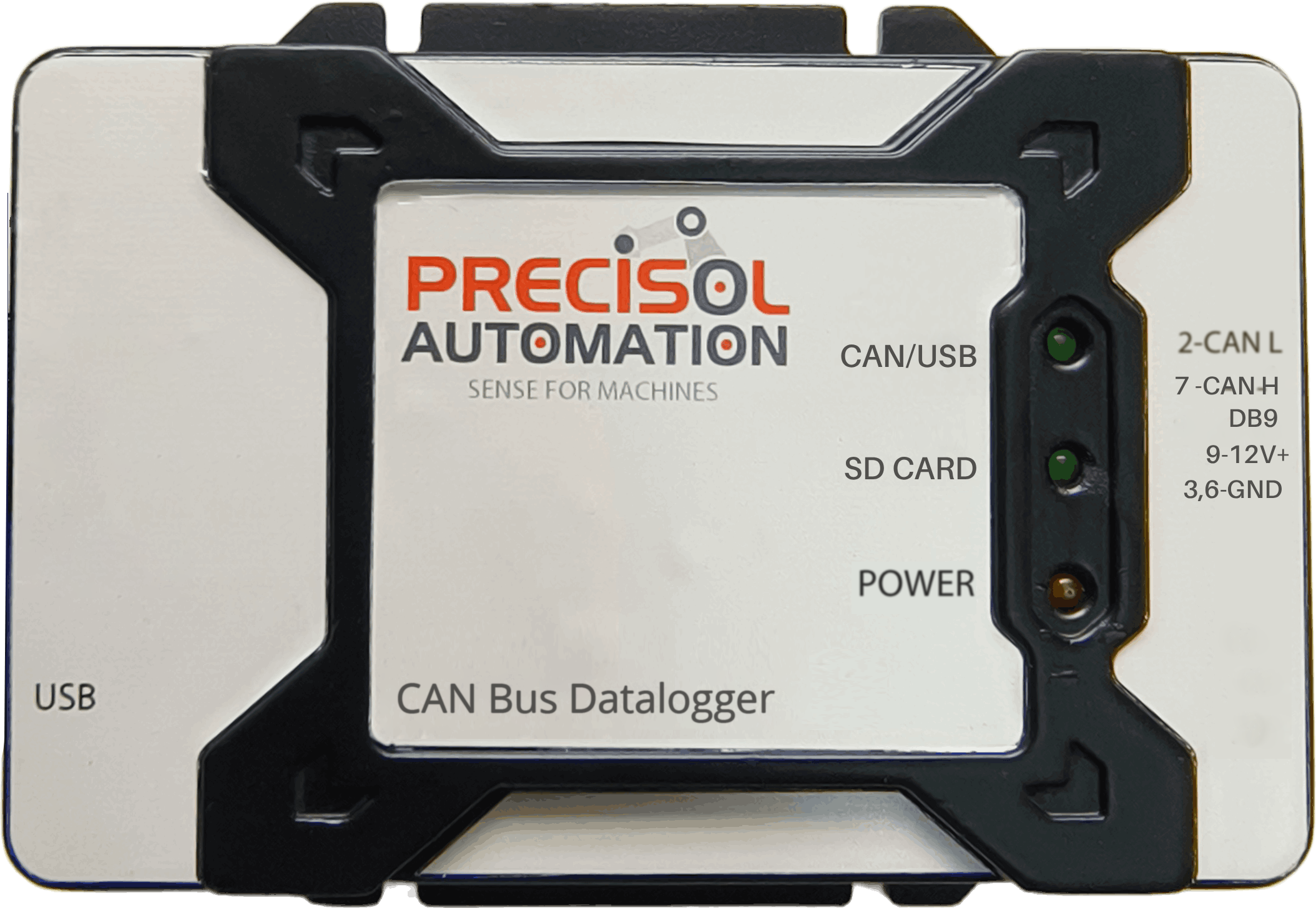Streamlining Automotive ECU Software Validation with the Precisol Automation CAN Data Logger
The rapid evolution of modern vehicles, particularly in the realm of electric powertrains and advanced driver-assistance systems (ADAS), has placed immense pressure on automotive engineers to accelerate software development and validation cycles. Electronic Control Units (ECUs), the brains of these systems, are at the core of this challenge. Ensuring the flawless performance and reliability of ECU software is paramount, yet traditional validation methods often struggle to capture the complex, real-world data needed for comprehensive testing. This conceptual case study explores how a cost-effective, robust, and user-friendly solution—a standalone CAN data logger—can be strategically integrated into the software validation workflow to provide a critical feedback loop, enabling faster, more accurate debugging and verification. By capturing precise, real-world CAN bus data, engineers can move beyond lab simulations to validate software performance in the field, ensuring that code operates as intended under diverse and unpredictable conditions.
The Challenge: Bridging the Gap Between Simulation and Reality
A major Tier 1 automotive supplier, specializing in advanced powertrain ECUs for a new line of electric vehicles (EVs), faced a significant bottleneck in their software development lifecycle. While their Hardware-in-the-Loop (HiL) and Software-in-the-Loop (SiL) simulations provided a controlled environment for initial code validation, they often failed to replicate the unpredictable nature of real-world driving. Intermittent software bugs, particularly those related to sensor data communication and timing, would surface only during physical road tests. This created a catch-and-release cycle:

- Problem Identification: A rare, intermittent fault would be observed by a test driver.
- Data Scarcity: Engineers lacked a comprehensive log of the vehicle's CAN bus at the exact moment the fault occurred. They would receive a simple error code, but not the rich, timestamped data of all communicating ECUs.
- Replication Failure: Without the full data stream, they could not reliably replicate the fault in the lab. This needle in a haystack problem wasted countless engineering hours.
- Slow Feedback: The long, iterative process of re-testing, waiting for the fault to reappear, and then attempting to capture the data was significantly delaying the software release schedule.
The supplier needed a solution that was not only reliable and easy to deploy but also capable of providing a full, time-stamped record of the vehicle's CAN bus activity, enabling them to capture critical events as they happened in the field.
The Solution: The Precisol Automation CAN Data Logger
The supplier opted to integrate the Precisol Automation CAN Data Logger into their validation fleet. They recognized that while the product was initially marketed for field testing and telematics, its core capabilities—robust, protocol-independent data logging to non-volatile memory—were perfectly suited for their ECU software validation needs. The deployment involved three key stages:
- Seamless Integration and Configuration:The compact, IP40-rated logger was easily mounted in each test vehicle. Engineers used the complimentary PreciCon software to configure the device. The protocol-independent nature of the logger meant they could capture data from various CAN buses (J1939, OBD2, etc.) without a hitch. The software allowed them to specify which CAN IDs and signals to log based on the ECU's DBC file, reducing the data volume and focusing on the most relevant information.
- Autonomous, Real-World Data Capture:Once configured, the loggers operated autonomously as a black box in the test vehicles. They were set to start logging automatically when the vehicle's ignition was turned on. This hands-off approach ensured that every test drive, whether for a planned validation routine or a spontaneous test, was fully documented. The logger's inbuilt non-volatile memory provided secure, uninterrupted data storage, and the real-time clock with battery backup ensured every data frame was meticulously timestamped, a crucial feature for post-analysis synchronization.
- Accelerated Root Cause Analysis: When an intermittent fault occurred, the test driver simply noted the time and a brief description. Back at the lab, engineers connected the logger to a PC via USB and downloaded the data in the industry-standard .MF4 format. The detailed log, containing every single CAN message with sub-millisecond timestamps, provided a complete picture of the network traffic leading up to, during, and after the event. This raw data proved invaluable.

The Benefits and Results
The integration of the Precisol Automation CAN Data Logger transformed the supplier's validation process, leading to a number of measurable improvements:
- Faster Debugging and Reduced Validation Time:The ability to instantly capture and replay a full, time-stamped data log of the vehicle network dramatically reduced the time spent on troubleshooting. A bug that previously took days or weeks to replicate could now be diagnosed in a matter of hours. The data could be replayed in a lab environment using a CAN bus analysis tool, effectively recreating the exact conditions of the field failure.
- Improved Software Quality and Reliability:The rich data captured in the field allowed engineers to identify and fix not only the bugs that caused the observed faults but also subtle software glitches that might otherwise have gone unnoticed. This proactive approach led to a more robust and reliable ECU software build before it ever reached the end-user. The log data could also be used to validate software patches and updates, ensuring that a fix for one bug didn't inadvertently introduce another.
- Cost-Effective and Scalable Solution:Compared to proprietary diagnostic tools and complex test setups, the Precisol logger was a low-cost, off-the-shelf (COTS) solution. Its simple, portable design made it easy to deploy across a large fleet of test vehicles, allowing for parallel validation efforts and increasing overall testing throughput.
- Enhanced Inter-ECU Communication Analysis: The data log served as a definitive record of inter-ECU communication. When a fault was traced to a specific ECU, engineers could use the log to determine if the issue was with the ECU's internal logic, or if it was receiving faulty data from another unit on the network. This comprehensive view was essential for validating the complex, interdependent software systems in modern vehicles.


